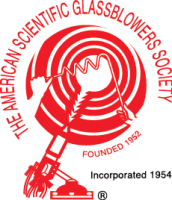Victor Mathews
Victor Mathews is Vice President of Litton Engineering Laboratories, overseeing the daily operations. Victor was also President of M-Tech Industries, a distributor of equipment and supplies to the glass working industry before merging his company into Litton Engineering. Prior to moving to the Grass Valley area, he worked in the semiconductor industry, automotive industry and the university system. Active in the ASGS for 30 years, Victor started his active roll with the first of several annual section meetings at Litton Engineering in the late 80’s and became the Secretary/Treasurer of the local section, a position he has held continuously since. He has served as Section Director and is currently the ASGS Treasurer, a position he assumed in July 2009. Victor has chaired three symposiums: Lake Tahoe, Vancouver and Eugene. He has presented seminars at past symposia and has written articles for Fusion. Victor has a Bachelor Degree in Marketing and a Master’s Degree in Procurement and Contract Management. He holds several national certifications and was listed in Who’s Who of Finance & Industry.

